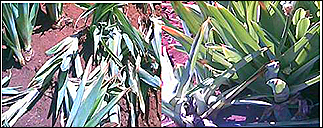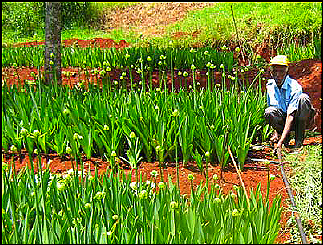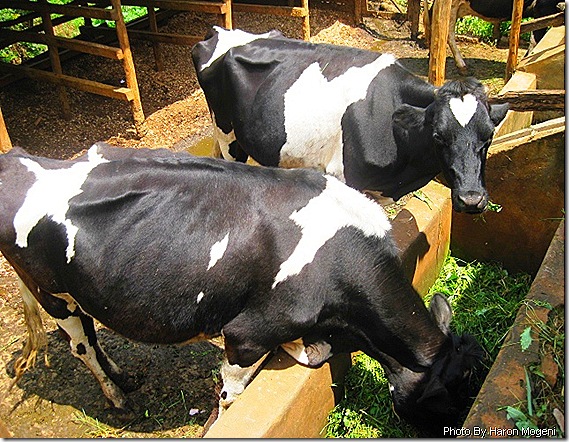Arabicum is an annual flower used in fresh bouquets, usually grown from bulbs. The foliage and the stem of this cut-flower originates from the bulb. Several leaves are produced on the mother bulb and bulb-lets are produced before the inflorescence is initiated. Only one stem is produced by each bulb.
 This annual flower is gaining popularity among small scale farmers because they are easy to grow, they yield higher returns to farmers. Thus many Non governmental organizations are promoting the cultivation of this flower on their poverty eradication efforts with great success.
This annual flower is gaining popularity among small scale farmers because they are easy to grow, they yield higher returns to farmers. Thus many Non governmental organizations are promoting the cultivation of this flower on their poverty eradication efforts with great success.

ECOLOGICAL REQUIREMENTS OF ARABICUM
Arabicum grows best in a cool climate at elevations of 1500-2000 Meters above sea level in Kenya.
Arabicum requires a growing temperature of 22-28 degrees.
Arabicum requires deep fertile well drained soils preferably with a slightly acid to neutral PH.
SUITABLE AREAS FOR GROWING ARABICUM IN KENYA
Areas where it is commonly grown include warm to cool areas such as Limuru, Redhill, Kericho and Embu.
CULTURAL PRACTISES CONDUCTED ON ARABICUM
Planting: the crop can be grown either from seed or bulbs. Initial planting material is bought, and then in subsequent years the crop is grown from previous years bulb-lets. The bulbs are planted in raised beds made from well ploughed land raised 10-15 cm high and 1 m wide and with 50 cm paths
Before planting the bulb-lets, they are sun-cured by spreading them in the sun for 7-9 weeks. The cured bulbs are planted by placing either on the soil surface( in warm areas) or in shallow holes(in cold areas). The bulbs are set with the roots facing downwards. Immediately after planting the bulbs should be irrigated to ensure rapid sprouting.
SPACING OF ARABICUM
This depends on the bulb size. Optimum spacing is 35-60 bulb-lets per square meters. On a 1 meter wide bed, four rows at 20cm apart are planted, with the bulbs 10 cm apart in the row.
FERTILIZER APPLICATION ON ARABICUM
The rate and type of fertilizer to be used depends on inherent soil fertility. Prior to planting, incorporate well rotted manure into the beds at a rate of 20kg/M2. At planting, add NPK 20:10:!0 or 17:17:17 at 50-100g per plant depending on soil fertility. During plant growth, do not apply large quantities of nitrate fertilizer as this only leads to vegetative growth at the expense of the flowers.
IRRIGATION OF ARABICUM
Arabicum requires plenty of water for quality flowers. During the growing season, the new bulbs form as leaves and stems extend. The roots from the original bulb anchor the plants and provide water and nutrients.
HARVESTING OF ARABICUM
It starts 3-4 months from planting. Arabicum starts to produce a stout flower stem with 8-12 scented white flowers with black centers. The flower stem is cut at the base, when 2-3 flowers on the stem are showing a white flush flush and are fully opened. They are immersed in cold water and moved out of the sun as soon as possible, harvesting continues over a 4-5 month period.
GRADING OF ARABICUM
Grading by stem length
Longer stems with a well developed blooms are classified as the best grade.
Grade I-70 cm long
Grade II- 50 cm long
Grade III- 40 cm long
POST HARVEST HANDLING OF ARABICUM
It is important to wrap the flowers with clean paper to avoid damage to the flowers during transport. Stems are packed in tens per bunch. Arabicum does not require any special preservative but the use of a bactericide in the water is recommended.
LIFTING OF ARABICUM
After harvesting the flowers, the roots and stems die back. When foliage has died back, the bulbs are lifted carefully and prepared for storage, by drying. Storage of the bulbs should be on racks in a shady location. Bulbs break their dormancy after 6-8 weeks.
YIELD OF ARABICUM
15-20 stems/M2

![clip_image001[1] clip_image001[1]](https://blogger.googleusercontent.com/img/b/R29vZ2xl/AVvXsEikO5ZjuWwj4i1lVZ_niG7Qu_ZyL_mu5JmjkOx2arQRT5sXd2pIrXr-X3lVS7hHGWCC9wwO9ixI1DZF5nxqB6Xbzmg4yeFslfZu1tOaE5RoV18Fo-jxT3n3v4gwbTKapTkJL2TmaEOtbqQ/?imgmax=800)









